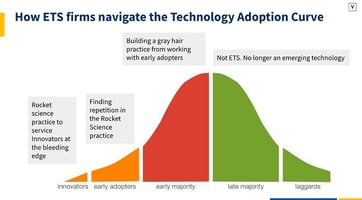When we introduced ETS we briefly touched on how the sales motion is different between ETS and...
Why Your Sales and Marketing Need to Be Aligned

Sales & marketing are supposed to be two pieces of the same puzzle. So why does it seem like they often operate like polar opposites instead, with different and sometimes conflicting priorities? But it’s not just about getting along - when these two departments aren’t in sync, it directly impacts revenue, lead conversion, and long-term growth.
Here's how to spot misalignment between sales and marketing in your own organization, track down its root causes, and bring together both teams for better results.
Signs of Misalignment
Sales and marketing misalignment shows up in subtle but costly ways. You might notice:
- Hit or miss lead quality: Sales teams frequently complain about the inconsistent quality of leads being sent their way.
- Low conversion rate: Sales teams may fail to convert SQLs into closed deals. Alternatively, Marketing teams may hand over a high volume of leads that fail to convert from MQL to SQL.
- Poor collaboration: Teams may avoid taking accountability for outcome or attempt to blame the other for them instead. The teams may also lack shared KPIs.
Why Things Don’t Fit
Several structural and cultural factors can drive a wedge between the teams and hold both of them back from performing at their best.
- Different success metrics: Marketing often focuses on metrics like traffic, MQLs, or engagement, while sales is laser-focused on closed revenue. Without any overlap between these metrics, both teams may optimize for different, sometimes contradictory things.
- Lack of communication: If the two teams aren’t regularly meeting or sharing insights, they will operate in silos. Marketing might not know what objections sales hears on calls, and sales may not understand what campaigns are running. They may also be unclear about how to route certain leads or how to keep their CRM data cohesive.
- No shared customer profile: If both teams don’t share the same customer profile, or the marketing team uses a much broader profile than is desirable for the Sales team, there will be poor-fit leads and frustration on both ends.
How to Align Sales and Marketing
Alignment matters—and it pays off. Companies with well-integrated Sales and Marketing teams see higher conversion rates, smoother sales cycles, better forecasting ability, and more consistent customer experiences. Fixing the disconnect between sales and marketing doesn’t happen overnight, but it starts with a few key actions:
- Create a Service Level Agreement (SLA)
An SLA is a formal agreement that outlines expectations for both teams. It defines what marketing owes to sales (like a number of MQLs per month) and what sales owes back (like timely follow-up and feedback). This creates mutual accountability and a shared sense of ownership. - Clearly Define MQLs and SQLs
Agree on what makes a lead “qualified” as an MQL and an SQL, and establish unambiguous lead scoring criteria based on factors both teams understand well. This reduces subjectivity and ensures both teams are working with the same understanding. - Meet Regularly
Set recurring check-ins where sales and marketing leaders review lead quality, campaign performance, and pipeline health. Use these meetings to develop feedback loops between both teams and for continuous improvement.
Wrapping Up
Sales and marketing are gears in the same growth engine. When they turn together, everything runs smoother and faster. If you're seeing signs of friction between your teams, take the time to align their goals, language, and process. Your pipeline - and your bottom line - will thank you.
A Gift for You 🎁
At Vixul, we spend a large part of our time reviewing the forecasts created by the founders of our portfolio companies. It is amazing for us to see our founders mature as executives and be able to answer questions they couldn't in the past. Unfortunately, most founders struggle with these issues until we point them in the right direction. We believe the lack of guidance on forecasting is a primary issue for early-stage tech services founders.
That's why we're working on an eBook with detailed instructions on how to set up forecasts for sales pipelines. This will help you plan your new year with better foresight. The book will be free for people on our mailing list when it is published, so please subscribe now to ensure you receive it.





